Summer nights in Salento have a distinct energy. In contrast to the sleepy stillness of the afternoon, Salento evenings pulse with life. In the piazzas and courtyards of its sun-soaked villages and in the age-old olive groves, the chorus of cicadas yields to the rhythm of pizzica music.
Pizzica, a traditional dance deeply ingrained in Salento’s culture, takes centre stage. Across Salento, pizzica has long been intertwined with the daily lives of its people, the percussive pulse of the tamburello their collective cultural heartbeat. An expression of love, work, joy, prayer and liberation.
There is also a sense of pride in this Salento tradition. In recent years pizzica has outgrown ritual and community. No longer is it limited to celebrations in Salento, at village festivals, concerts and weddings. Across Italy couples choose pizzica for their wedding music. Pizzica schools have opened in Rome and pizzica workshops are regularly held in northern cities like Turin and Milan (and beyond).
Fashion brands have also jumped on pizzica’s popularity. In 2020, Lecce, the unofficial capital of Salento, served as a baroque backdrop for Dior’s annual fashion showcase. Models walked the catwalk as local pizzica dancers danced around them. More recently Dolce & Gabanna visited the region to showcase their 2023 collections.
Since its emergence into the mainstream, pizzica has become part of Puglia’s international brand identity.
Origins
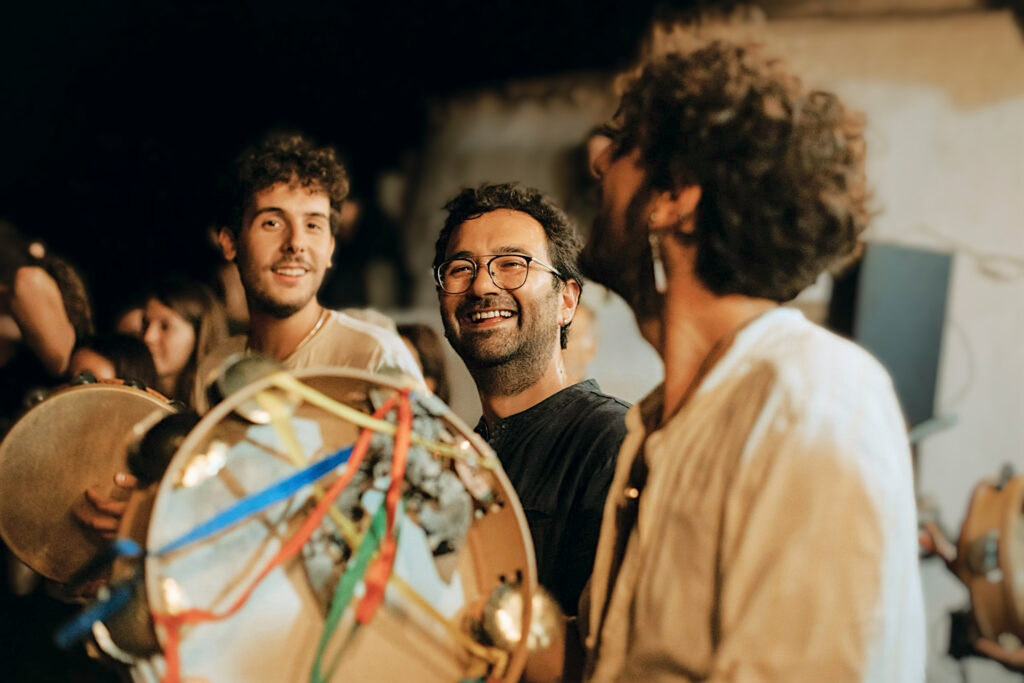
Pizzica salentina is a form of the therapeutic tarantella dance, typical of Southern Italy. The bite of the “taranta”, the tarantula, would bring about an altered trance-like state.
When the victim, usually a woman working in the fields or olive groves, had been bitten local musicians rushed to the house of the afflicted with their instruments: traditionally violin, mandolin, accordion and the tamburello (a large tambourine). Family and other villagers would join in, those without instruments chanting.
Once there they would begin to play, slowly at first. The patient, usually suffering high fever by this time, began the dance. The aim was to expel the poison (or malignant spirit) through sheer force of motion and perspiration. As the music and chanting would get faster, so too would the dancer. Fast jumping steps and non-stop spins would follow the pressing rhythm of the tambourines, reaching a trance-like intensity and a relentless, visceral rhythm of 100 beats per minute, driving dancers into a frenzy.
The music, dance and chanting would continue until its climax, when the victim collapsed to the floor, completely exhausted, but cured.
It is believed that the Salento pizzica has its origin in pagan rites in honor of Dionysus at the time of Greek colonization. The Greek god of fertility, wine-making and orchards would be celebrated with songs and wild dances. With the advent of Christianity, Dionysus was replaced by Saint Paul, the holy healer who is often invoked in the songs that accompany the pizzica in which the Saint is invoked:
“[…] And please Saint Paul make her heal/because the tarantula pinched* her/If you see that she moves her foot/that’s the sign that she wants to dance/let her dance because she is possessed by the tarantula/that she carries the tarantula under her foot”.
*Pizzica means “pinch”, which is how the bite of the spider was described.
The dance
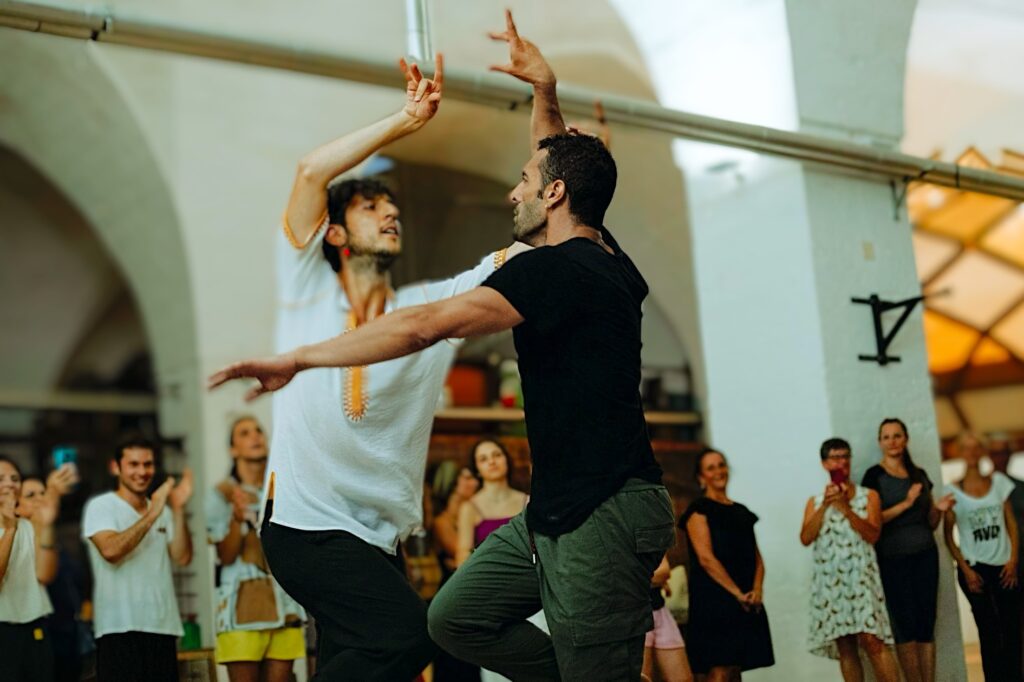
Traditional pizzica is danced in pairs. Some are danced only by men, as a symbolic challenge. The rutting of males, and a battle for the fittest suitor (historically danced more frequently than the coupling of a man and a woman).
When danced by the latter – the pizzica de core – the steps represent the complex and provocative courtship ritual. The dance is both passionate and erotic – the woman inviting her chosen partner with the shake of a red handkerchief, a symbol of passion – but without ever touching. The only contact is the gaze between the couple, the dance unfolding in a continuous approaching and moving away of the bodies. Provocative, inviting and, in modern parlance, thirsty!
In recent years, thanks to music festivals, the pizzica has become communal dance, in which all can participate.
The steps
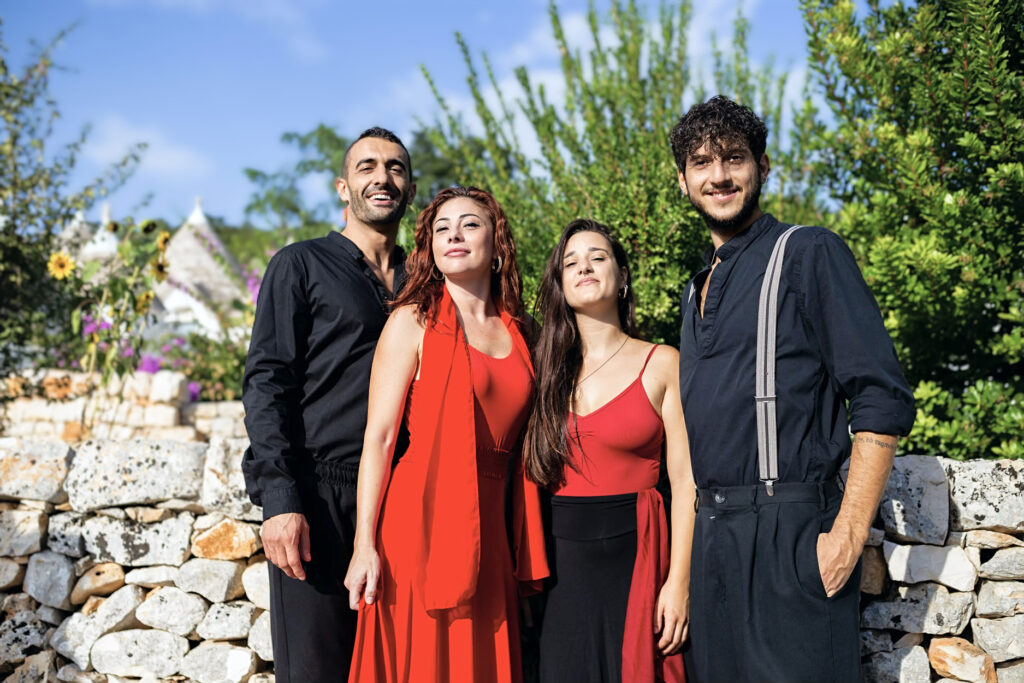
Pizzica has no prescribed steps. It is a continuous chasing of the couple, alternating your feet in small jumps forward, turning in circles, moving your hands in inviting gestures. The freedom of the dance makes it one of the most beautiful dances of the Salento cultural tradition, allowing for new and contemporary interpretations by each dancer.
It is the woman who leads the dance and invites her potential partner to come closer. In response the other dancer turns closer and closer, while she makes small jumps on the spot. But when the man’s approach becomes urgent, she withdraws spinning away from him. When the suitor is no longer welcome, the dancer will invite someone else to join her by waving the red handkerchief in the air, which will only be given to her final, chosen suitor.
Modern Pizzica
No longer confined to village squares and olive groves, pizzica now takes center stage at La Notte della Taranta, Italy’s largest music festival. A celebration of pizzica stretching over several weeks and leading up to the main concert in the small Salento town of Melpignano (30 km south of Lecce) attended by 200,000 festival goers (to next take place on 24 August 2024).
But pizzica music can be heard on the streets of Salento all summer long. From Ostuni to Otranto and beyond. Free pizzica festivals, pizzica nights and events take place where residents participate, wholeheartedly. It is such a joyous experience.
The San Vito Feeling
One of the best known pieces of Salento pizzica is the pizzica di San Vito (in the Sanvitese dialect, la pizzica di Santu Vitu) taking its name from the small Salento town of San Vito dei Normanni.
Passed down for generations it is a song expressing the feeling of longing and desire. The pizzica style and feeling of San Vito is distinct from other forms of tarantella. It had a distinct beat that tells it apart.
The lyrics of the song describe the singer’s longing for a woman, and his desire to be close to her. The repeated refrain of “Ah uellì uellì uellà” urges the woman to come closer to him. The verses that follow describe the intense passion and desire that the singer feels. He imagines stroking her hair and carrying her away in the wind. He sings of the power of the gaze, and how just looking into each other’s eyes can cause their hearts to race. The song ends with the singer declaring that he will return to deliver another serenade, urging her not to forget him.
San Vito dei Normanni remains at the heart of Salento’s pizzica tradition. The Scuola di Pizzica di San Vito is based here. As well as their dance school, they host many pizzica celebrations, including free pizzica nights with musicians, singers and dancers. They also teach pizzica in Rome and recently have run workshops in Naples, Barcelona and Paris.
Their local pizzica events in and around San Vito take place all summer long. Everyone is welcome to experience the San Vito feeling.
Take part | Puglia’s World Music Academy host the annual Coreutica festival with pizzica workshops and free concerts.
Taking part in a pizzica night is one of the top travel trends for visiting Puglia in 2024. Find out where and when to participate.
We eat where locals eat. Our curated restaurant guide to Puglia’s best restaurants recommends our favourite local restaurants.
Photos in this feeling San Vito article including the main photo are used with the permission of World Music Academy / Scuola di Pizzica di San Vito. Photos ©️ World Music Academy/Scuola di Pizzica di San Vito, of San Vito dei Normanni. Videos our own.

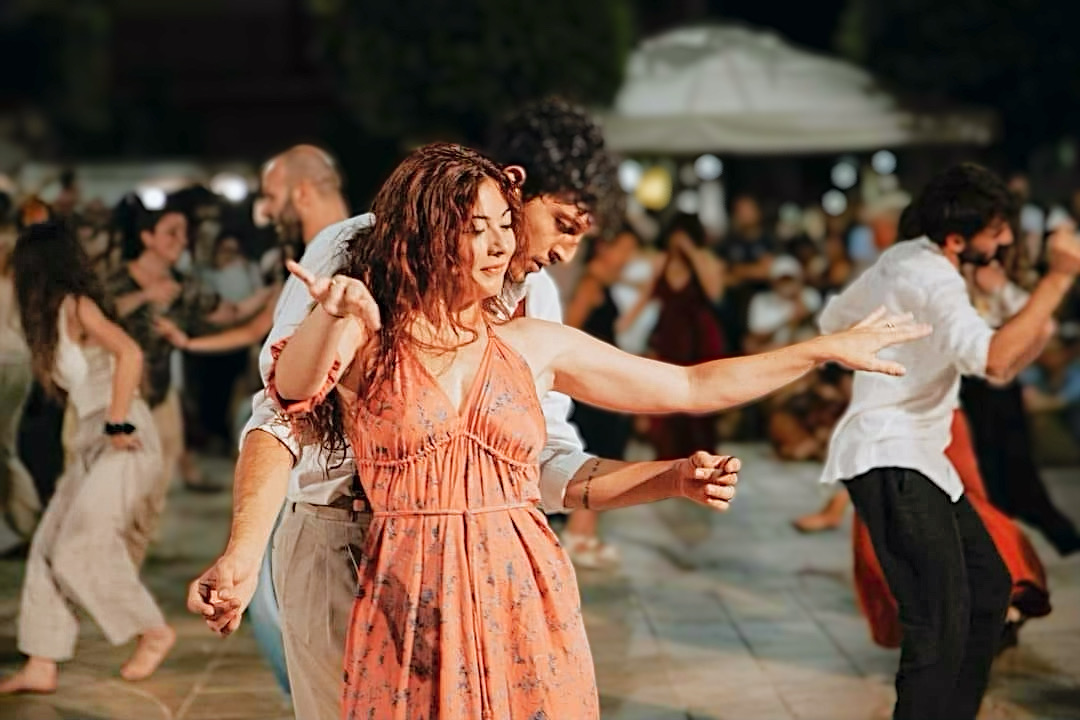

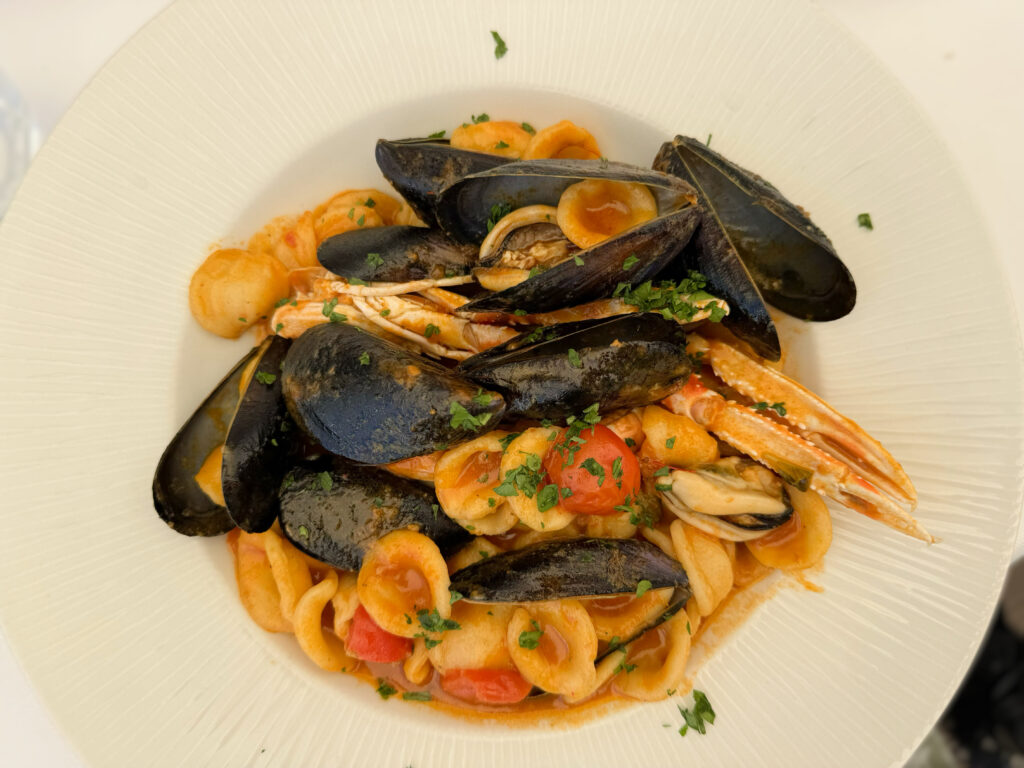
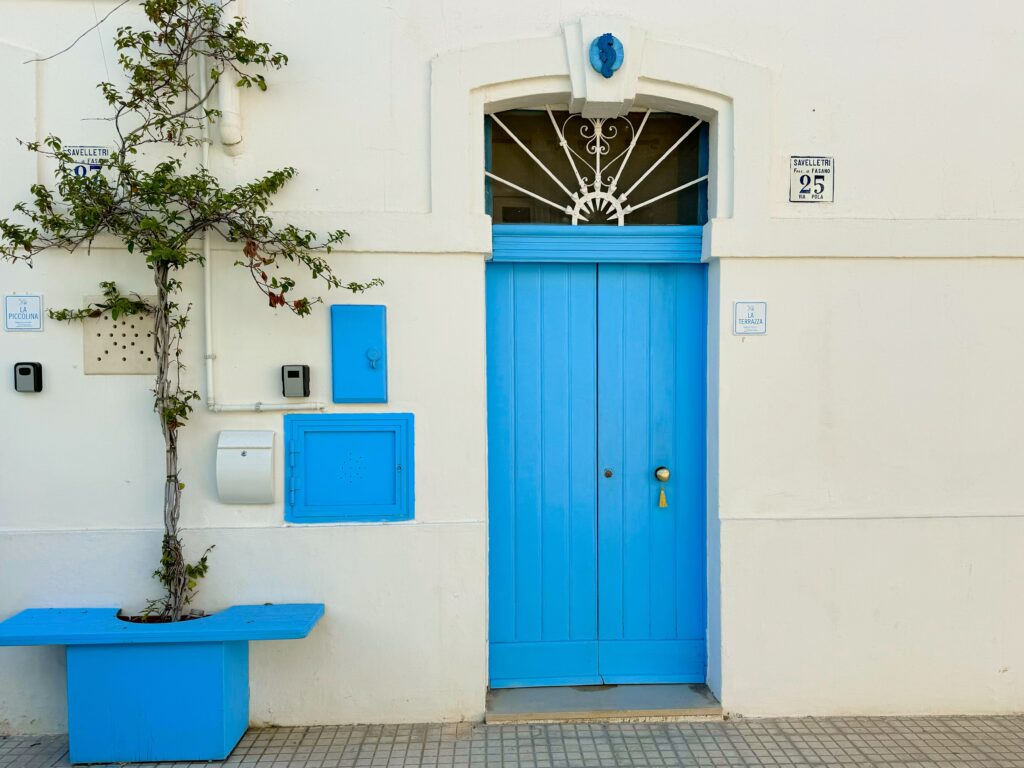
One Comment